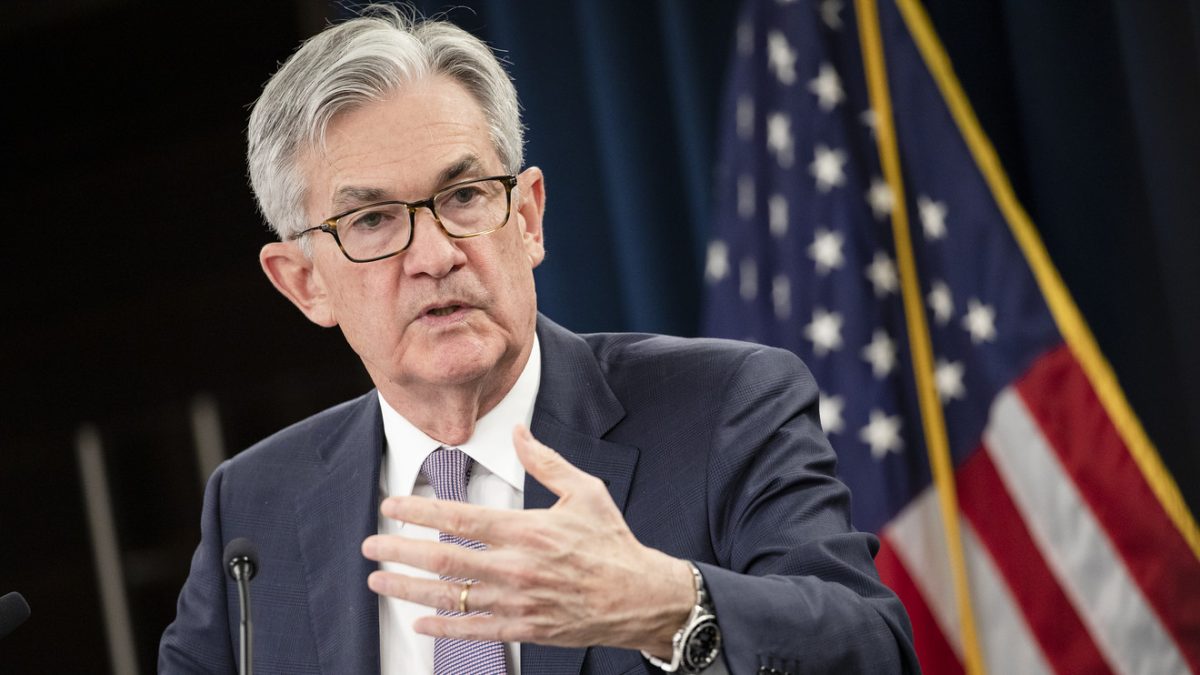Throwing proverbial kitchen sink due to ‘challenging period’ ahead for economy

Published: March 15, 2020 at 8:06 p.m. ET, By Greg Robb
The Federal Reserve on Sunday threw in the proverbial kitchen sink to lessen the expected blow to the U.S. economy from the coronavirus.
In a rare Sunday decision that comes three days before a scheduled formal meeting, the central bank slashed its benchmark interest rate to zero and implemented a bond-buying program, known as quantitative easing, of at least $700 billion.
“The virus presents significant economic challenges,” Fed Chairman Jerome Powell said during a press conference held an hour-and-a-half after the rate decision was announced.
“Measures to stem the spread of the illness will have a significant effect on economic activity in the near term,” he added.
Powell acknowledge the Fed can’t help businesses or workers who are hurt by the broad shutdown of normal day-to-day activity. That is the role for Congress and the administration, he said.
The Fed’s job is to make sure financial markets are not dysfunctional and credit is flowing, he said.
Powell said the economy would be weak in the April-June quarter, with a likely decline in output. What happens after that depends on developments with the pandemic, he said.
The Fed cut its key benchmark rates by 100 basis points to a range of zero to 0.25%. That’s the “zero lower bound” for rates. Powell repeated that the central bank doesn’t intend to push the benchmark rate into negative territory, as some foreign central banks have.
In making the decision, the Fed was following its crisis playbook, which calls for the central bank to be as aggressive as possible once policy makers conclude rates are likely to fall close to zero.
The vote to slash rates was not unanimous. Cleveland Fed President Loretta Mester dissented, saying she preferred a half-point cut.
The new round of QE will consist of open-ended purchases of $500 billion of Treasury securities and $200 billion of agency mortgage-backed securities.
Powell said the asset purchases were designed to restore smooth Treasury market functioning so credit could flow to households and businesses. Some of the crises-era bond-buying programs were controversial with lawmakers.
Powell used stark language to defend the new QE. The Treasury bond market is the foundation of the U.S. financial system, and the mortgage-backed securities market is closely aligned with that.
“If they don’t function well, that will spread, Powell said.
Ward McCarthy, an economist at Jefferies, summed up the program in a few words: “The kitchen sink has been thrown.”
In a sign of a dovish stance, the Fed stressed rates would stay near zero for a long time.
Specifically, the Fed said it expected to keep rates near zero “until it is confident the economy has weathered recent events and is on track to achieve its maximum employment and price stability goals.” That means rates will stay low as the Fed expects inflation to hit 2%. That has only happened a few times since the 2008 financial crisis and never for a sustained period.
The Fed is “willing to be patient,” Powell said.
Dow Jones Industrial Average futures sank after the announcement Sunday. The Dow jumped Friday after President Donald Trump declared a national emergency, but ended the week down about 20% from its record high.
The Fed said it was willing “to use its full range of tools” to support the flow of credit in the markets.
The central bank again pledged to do whatever it takes to keep short-term lending markets liquid.
The Fed lowered the rate charged to banks for short-term emergency loans from its discount window to 0.25% from 1.75%. The central bank eliminated reserve requirements for banks and said it would urge banks to tap their liquidity and capital buffers to lend to clients.
To help foreign firms and banks who need dollars, the Fed activated dollar swap plans with the Bank of Canada, the Bank of England, the Bank of Japan, the European Central Bank and the Swiss National Bank.
Trump has been urging the Fed to act and said after the announcement that he was pleased with the decision.
Powell stressed that he didn’t think the Fed was out of tools after today’s actions.
The Fed chairman said Sunday’s decision was in lieu of a the meeting set for Tuesday and Wednesday. The Fed won’t release a “dot plot” showing the expected path of interest rates over the next few years or an economic forecast until June, he said.
Source: www.marketwatch.com